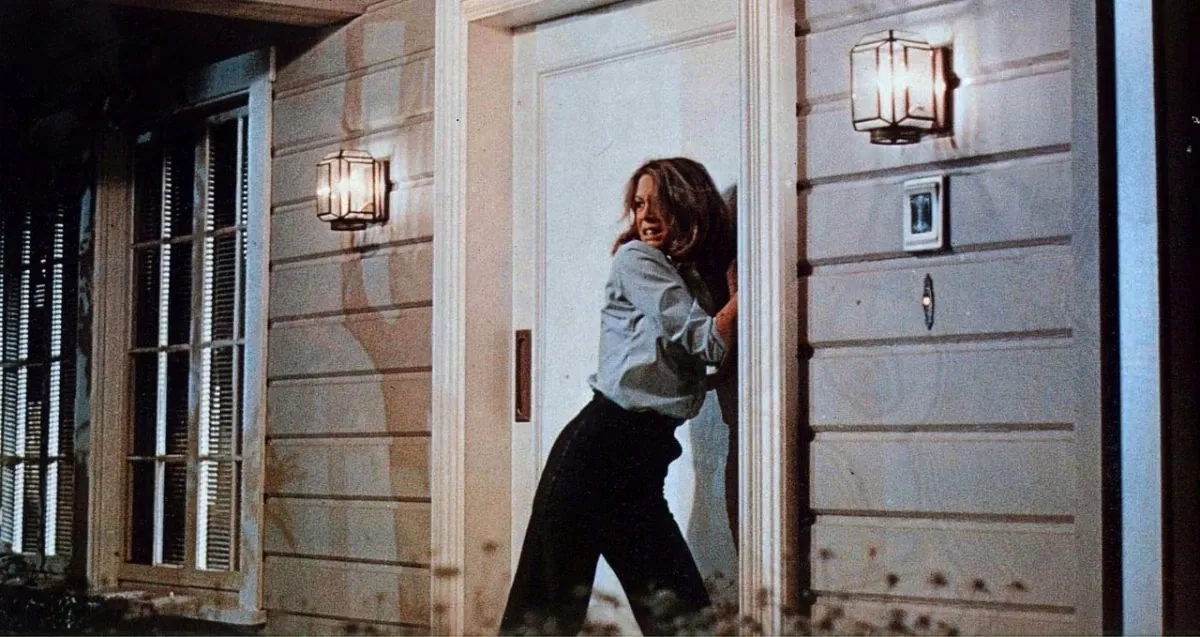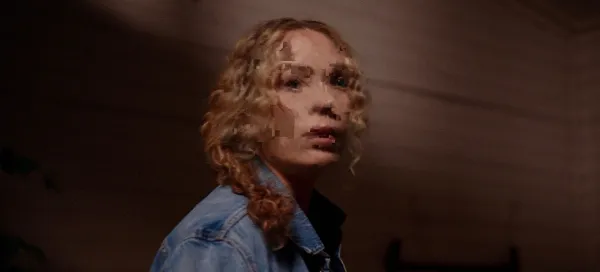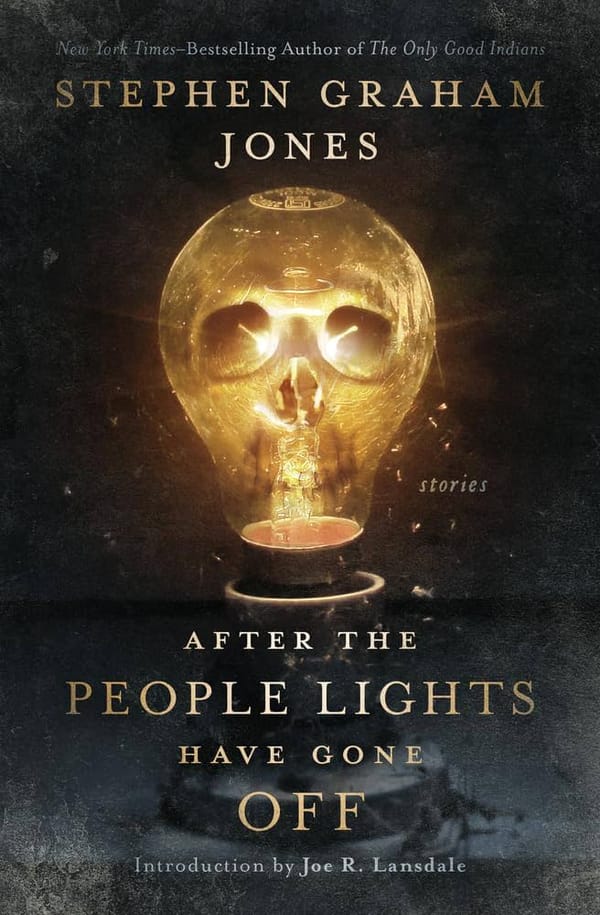Tracing The Shape 23: The Scariest Scene in the Movie

The single most frightening moment in Halloween doesn't feature Michael Myers.
Here's there, of course. He's always there somewhere, passing like a shadow over Haddonfield, infecting it with his darkness, his menace, his pulsing drive to destroy. But the scariest scene in the movie leaves Michael offscreen, waiting in the shadows, because for once, he doesn't need to be there to terrify us. For that, we have to look to an ordinary human.
There's an entire subgenre of jokes throughout pop culture about people making bad decisions in horror movies. I'm not going to rant about that now (though believe me, I could), but I am going to point out that, once Laurie Strode gets free of the Wallace house, she does what seems like the smartest possible thing she could do in that moment. She runs to the nearest house, pounds on the door, and asks for help.
Laurie's a resident of Haddonfield. She knows this neighborhood, she babysits for the kids on this street. She has no reason to believe that this community she's been a part of for, as far as we know, her entire life, would ever turn its back on her. Hell, her father's probably sold half of these people their houses.
And yet when she runs next door, she is swiftly rejected. The porch light goes on and the blinds part just enough for whoever lives in that house to see Laurie on their stoop, screaming and begging, and then the blinds close, the light goes out. Laurie is alone, alone while another adult, a member of her community, is just a few feet away, unwilling to do anything. The half-whimpered "Oh, God" Jamie Lee Curtis utters when she's cast into darkness is still a gut punch every time I watch this film.
There is a reason that the horror of the small town, of the suburbs, of the affluent neighborhoods, of the ordinary meeting a sudden intrusion of the extraordinary, popped in such a big way in the 1970s, from John Carpenter to Stephen King to William Peter Blatty. If the '50s were the postwar boom years and the '60s were the years of social change and experimentation, the '70s were the comedown. Horror films of the period have a tremendous sense of paranoid anxiety to them, particularly surrounding beautiful homes, quiet streets, comfortable communities. The fear, whether it's a demon terrorizing an actress's daughter in the DC Metro area or a masked maniac killing babysitters in Illinois, comes not just from each story's chosen monster, but from the sense that we have lost control. All of the promise of the American experience as we were sold it – and sold is the operative word here, because it was always a commodity, not a lifestyle – comes crashing down when we realize the social contracts aren't as binding as we'd hoped.
Michael Myers, the Boogeyman, is the avatar of this unbinding, the death knell of the white picket fence comfort and freedom that the small town, suburban life is meant to afford. He shatters the quiet, rips away the safety, and eventually even renders neighbors that might have once been helpful cold and still as the grave. If we're going to call him a force of nature at all, he is a miasma, a dark cloud dissolving the bonds which supposedly existed in this town, fraying them until they split.
The Wallaces' neighbor might have turned out the light because they thought some teenager was playing a prank on them, but that feels far too simple and, for a film with this much complexity, unsatisfying. Carpenter drives the point of this scene home by having Michael disappear for the duration, appearing from behind the Wallace house only when he's sure the neighbor is out of the picture and Laurie is running back across the street to the Doyle house. Michael knew well enough to wait, and Carpenter knew that if he showed the neighbor being cold and dismissive of Laurie even when Michael was absent, the scare would land that much harder.
The Boogeyman doesn't have to be over your shoulder for you to abandon all sense of decency, reason, and righteousness. You just have to believe he is.
And all of Haddonfield believes in the Boogeyman now, whether they know it or not.
Next: Knitting needles!



